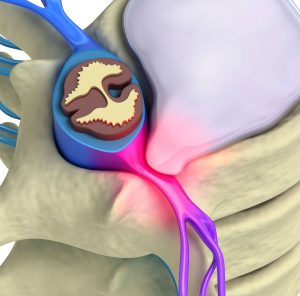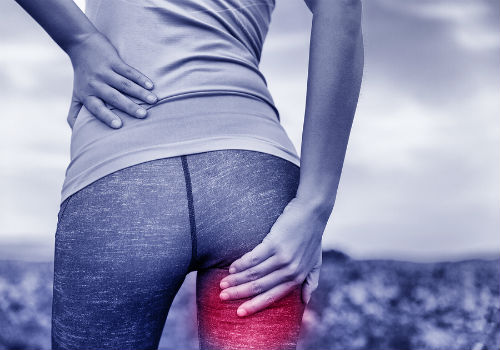A common sports injury among athletes is a herniated disc. The intervertebral discs serve as shock absorbers that sit between each of the discs or vertebrae in the spine. Each spinal disc is made up of a soft internal layer called the nucleus pulposus and a harder outer layer called the annulus fibrosis.
When an intervertebral disc becomes herniated, the soft inner portion of the disc spills out and affects the surrounding nerve roots. This spillage results in extreme discomfort such as shooting pains, numbness, or tingling in the legs.

Symptoms of a herniated disc include:
- Weakness
- Tingling
- Numbness
- Arm and/or leg pain
Aside from genetic predisposition to develop a herniated disc, the leading cause among athletes is injury from contact sports.
Here are some ways contact sports can cause disc herniation:
1.Running
In a review examining 10 cases of runners with acute lower back pain, running heightened their chances of developing a herniated disc. Running perpetuates the issue because it exerts force on the spinal discs as the body makes repetitive impact with the ground.
High-impact running can increase an individual’s risk of acquiring a herniated disc in the first place or worsen an already herniated disc
Although it is essential to stay active with back pain, finding a way to exercise without running could benefit your health by preventing injury,

2. Twisting or Turning the Spine
Another reason contact sports can lead to a herniated disc is from abruptly twisting or turning the spine. Football players are increasingly at risk for this condition because they are required to have fast reflexes and turn around at any moment.
When an athlete twists his spine during a game, he turns with such force that it increases the likelihood of the nucleus pulposus bursting and causing a herniated disc.
3. Heavy Lifting
Either from years spent lifting weights or training for intense contact sports, athletes can acquire herniated discs from lifting too much weight or poor technique while lifting.
Lower back pain can occur from working out with improper form. Two of the most common exercises that cause issues in the back and neck are:
a) Deadlifts
Deadlifts are a strength-training exercise that must be executed with the right form or else they could be harmful to your spine. Stand with your legs hip-width apart and hold a barbell weight. Bend the legs from your hip and make sure to engage your abdominal muscles, while keeping your back straight and chest facing forward.
If you allow your back to arch, you are putting yourself at risk for a herniated disc. If athletes fall into the habit of executing deadlifts with improper technique, they could potentially ruin their athletic career.
b) Squats
Squats require a similar technique to deadlifts. The abdominal muscles should be engaged, and the hips should make a 90-degree angle to the ground for correct form. Squats can be done with or without weights, but if done improperly, they can also cause herniated discs. Squats require you to lift the entirety of your body weight, and heavy lifting is known to cause disc herniation if done improperly.
Prevention
Athletic programs make efforts to prevent these injuries such as making rule alterations, teaching proper technique, and encouraging health check-ups. Prevention focuses mainly on maintaining a certain standard of physical health, as well as treating any signs or symptoms of herniated disc pain before it gets too severe.
When athletes first experience symptoms of a herniated disc, they should stop all activity immediately.
Usually, this can be treated by your physician with the help of anti-inflammatory drugs, rehabilitation, and rest. Symptoms subside after about six weeks if taken proper care of.
Often physicians recommend maintaining good posture to prevent disc herniation, and in severe cases, a chiropractor may suggest having spinal adjustments to solve the problem.
If you are experiencing any of the symptoms of a herniated disc, it is important to cease all weight lifting, training, and physical activity until the root of the problem is examined. To avoid injury, it’s important to know how far you can safely push yourself. While many athletes want to exceed expectations, improper form and injury can only be detrimental to their futures.


